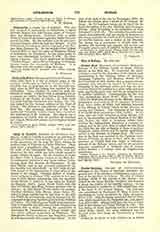

Ciudad Rodrigo, Diocese of (CIVITATENSIS), suffragan of the Diocese of Santiago, comprises the greater part of the province of Salamanca, and a portion of the province of Caceres. The city of Ciudad Rodrigo, which is the capital of the diocese, was named for the Count Rodrigo Gonzalez, who founded it about the middle of the twelfth century. It has approximately a population of 7000 inhabitants, and is the head of the judicial district. The bishopric was established by Ferdinand II, King of Leon, its establishment being confirmed by Pope Alexander III in 1175. This see finally succeeded that of Caliabria, which dated from the Visigothic era, and existed from 621 to 693. Alfonso VIII gave the city of Caliabria to the Diocese of Ciudad Rodrigo in 1191. The first bishop of whom anything certain is known was called Pedro (1165); the most celebrated was the learned jurist Don Diego de Covarruvias y Leyva (1560).
EDUARDO DE HINOJOSA

